Collocations, or common word pairings, are essential for sounding natural and fluent in any language. In English, the verb “say” is particularly versatile and forms numerous collocations that can enhance your writing and speaking skills. By mastering these collocations, you can add nuance and precision to your communication.
Table of Contents
- Speak Fluently 🗣️ 30 Key Collocations with Say
- #1. Say Hello 👋
- #2. Say Goodbye 👋
- #3. Say Something 🗣️
- #4. Say Yes 👍
- #5. Say No 🚫
- #6. Say Sorry 😔
- #7. Say Thank You 🙏
- #8. Say a Prayer 🙏
- #9. Say No More 🤐
- #10. Say Your Name 🏷️
- #11. Say Grace 🙏
- #12. Say Out Loud 🗣️
- #13. Say the Word 📢
- #14. Say it Again 🔁
- #15. Say Cheese 📸
- #16. Say No to Drugs 🚫
- #17. Say it with Flowers 💐
- #18. Say What? ❓
- #19. Say it to My Face 👤
- #20. Say for Sure ✅
- #21. Say Nothing 🤐
- #22. Say a Few Words 🗣️
- #23. Say to Yourself 🤔
- #24. Say with Conviction 💪
- #25. Say No More 🤐
- #26. Say Sorry 😔
- #27. Say Thanks 🙏
- #28. Say in Passing 🚶
- #29. Say Aloud 🗣️
- #30. Say Under Your Breath 😤
- Collocations With Say Table
- Most Common Collocations With Say Worksheet
- Conclusion
Speak Fluently 🗣️ 30 Key Collocations with Say
This blog post will explore 30 common collocations with “say,” providing definitions, phonetic transcriptions, and example sentences for each. Whether you’re an English learner or a native speaker looking to polish your language, these collocations will be a valuable addition to your vocabulary.
Let’s dive into the world of collocations with “say” and elevate your English to the next level.
#1. Say Hello 👋
Definition: To greet someone.
Phonetic Transcription: /seɪ həˈloʊ/
Examples:
- She always says hello with a warm smile.
- Don’t forget to say hello to your neighbors.
#2. Say Goodbye 👋
Definition: To bid farewell to someone.
Phonetic Transcription: /seɪ ɡʊdˈbaɪ/
Examples:
- He waved as he said goodbye to his friends.
- It’s hard to say goodbye when you’re leaving a place you love.
#3. Say Something 🗣️
Definition: To speak or communicate.
Phonetic Transcription: /seɪ ˈsʌmθɪŋ/
Examples:
- If you see something suspicious, say something.
- She wanted to say something but decided to keep quiet.
#4. Say Yes 👍
Definition: To agree or accept.
Phonetic Transcription: /seɪ jɛs/
Examples:
- He was thrilled when she said yes to his proposal.
- Don’t hesitate to say yes to new opportunities.
#5. Say No 🚫
Definition: To refuse or decline.
Phonetic Transcription: /seɪ noʊ/
Examples:
- It’s important to say no when you’re overwhelmed.
- She had to say no to the invitation due to prior commitments.
#6. Say Sorry 😔
Definition: To apologize.
Phonetic Transcription: /seɪ ˈsɑri/
Examples:
- He immediately said sorry for his mistake.
- She needed to say sorry for being late.
#7. Say Thank You 🙏
Definition: To express gratitude.
Phonetic Transcription: /seɪ θæŋk ju/
Examples:
- Don’t forget to say thank you to your host.
- He said thank you to everyone who helped him.
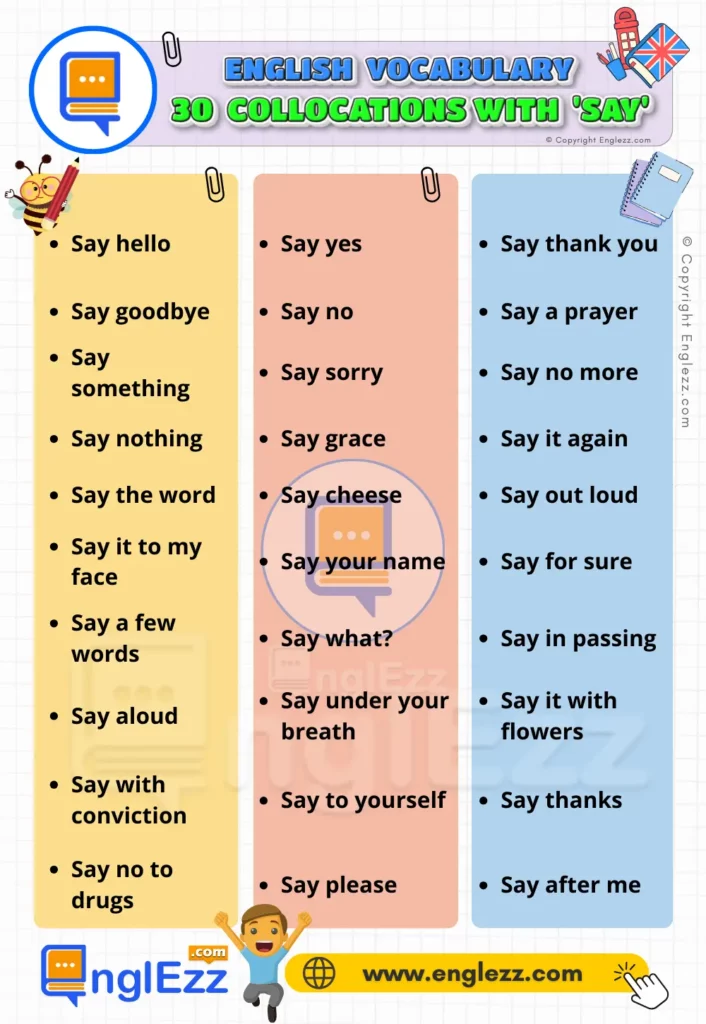
#8. Say a Prayer 🙏
Definition: To pray.
Phonetic Transcription: /seɪ ə prɛr/
Examples:
- They said a prayer before the meal.
- She always says a prayer before going to bed.
#9. Say No More 🤐
Definition: To indicate understanding or agreement without the need for further explanation.
Phonetic Transcription: /seɪ noʊ mɔr/
Examples:
- “I need a favor.” “Say no more, I’m on it.”
- When he saw her tears, he said no more and hugged her.
#10. Say Your Name 🏷️
Definition: To state one’s name.
Phonetic Transcription: /seɪ jʊr neɪm/
Examples:
- Please say your name for the record.
- She asked him to say his name loudly.
#11. Say Grace 🙏
Definition: To offer a prayer of thanks before a meal.
Phonetic Transcription: /seɪ ɡreɪs/
Examples:
- They always say grace before dinner.
- He was asked to say grace at the family gathering.
#12. Say Out Loud 🗣️
Definition: To speak something audibly.
Phonetic Transcription: /seɪ aʊt laʊd/
Examples:
- She was too shy to say her thoughts out loud.
- The teacher asked him to say the answer out loud.
#13. Say the Word 📢
Definition: To give a command or signal.
Phonetic Transcription: /seɪ ðə wɜrd/
Examples:
- Just say the word, and I’ll be there.
- If you need help, just say the word.
#14. Say it Again 🔁
Definition: To repeat something.
Phonetic Transcription: /seɪ ɪt əˈɡɛn/
Examples:
- Could you say it again? I didn’t hear you.
- She asked him to say it again more clearly.
#15. Say Cheese 📸
Definition: To instruct someone to smile for a photograph.
Phonetic Transcription: /seɪ tʃiz/
Examples:
- Everyone, say cheese!
- The photographer asked them to say cheese.
#16. Say No to Drugs 🚫
Definition: A campaign phrase advocating against drug use.
Phonetic Transcription: /seɪ noʊ tə drʌɡz/
Examples:
- The school promotes the message “Say no to drugs.”
- Parents should teach their children to say no to drugs.
#17. Say it with Flowers 💐
Definition: To express feelings through the giving of flowers.
Phonetic Transcription: /seɪ ɪt wɪð ˈflaʊərz/
Examples:
- He decided to say it with flowers for their anniversary.
- Saying it with flowers can convey more than words.
#18. Say What? ❓
Definition: An expression of surprise or disbelief.
Phonetic Transcription: /seɪ wʌt/
Examples:
- When she heard the news, she was like, “Say what?”
- “We’re moving to Spain.” “Say what?”
#19. Say it to My Face 👤
Definition: To confront someone directly with what you have to say.
Phonetic Transcription: /seɪ ɪt tə maɪ feɪs/
Examples:
- If you have something to say, say it to my face.
- She dared him to say it to her face.
#20. Say for Sure ✅
Definition: To express certainty.
Phonetic Transcription: /seɪ fər ʃʊr/
Examples:
- I can’t say for sure if he’ll attend.
- Can you say for sure that this is the right address?
#21. Say Nothing 🤐
Definition: To remain silent.
Phonetic Transcription: /seɪ ˈnʌθɪŋ/
Examples:
- If you’re not sure, it’s better to say nothing.
- He decided to say nothing and walked away.
#22. Say a Few Words 🗣️
Definition: To speak briefly, usually as part of a larger event.
Phonetic Transcription: /seɪ ə fju wɜrdz/
Examples:
- The guest of honor was asked to say a few words.
- She wanted to say a few words in memory of her friend.
#23. Say to Yourself 🤔
Definition: To think privately.
Phonetic Transcription: /seɪ tə jʊrˈsɛlf/
Examples:
- She said to herself that she could do it.
- He said to himself that it was time for a change.
#24. Say with Conviction 💪
Definition: To speak confidently and with strong belief.
Phonetic Transcription: /seɪ wɪð kənˈvɪkʃən/
Examples:
- When you present, say it with conviction.
- He said it with conviction, and everyone believed him.
#25. Say No More 🤐
Definition: To indicate that no further explanation is needed.
Phonetic Transcription: /seɪ noʊ mɔr/
Examples:
- “I understand. Say no more.”
- He realized he had said enough and decided to say no more.
#26. Say Sorry 😔
Definition: To apologize.
Phonetic Transcription: /seɪ ˈsɑri/
Examples:
- She immediately said sorry for the misunderstanding.
- It’s never too late to say sorry.
#27. Say Thanks 🙏
Definition: To express gratitude.
Phonetic Transcription: /seɪ θæŋks/
Examples:
- Don’t forget to say thanks to everyone who helped.
- He said thanks and left quickly.
#28. Say in Passing 🚶
Definition: To mention casually.
Phonetic Transcription: /seɪ ɪn ˈpæsɪŋ/
Examples:
- She mentioned it in passing, but it caught my attention.
- He said in passing that he might visit next week.
#29. Say Aloud 🗣️
Definition: To speak audibly.
Phonetic Transcription: /seɪ əˈlaʊd/
Examples:
- Please say your answer aloud.
- She likes to say her thoughts aloud while thinking.
#30. Say Under Your Breath 😤
Definition: To mutter softly.
Phonetic Transcription: /seɪ ˈʌndər jʊr brɛθ/
Examples:
- He said something under his breath that I couldn’t hear.
- She tends to say things under her breath when she’s upset.
Collocations With Say Table
| Collocation 1 | Collocation 2 | Collocation 3 |
|---|---|---|
| Say hello | Say yes | Say thank you |
| Say goodbye | Say no | Say a prayer |
| Say something | Say sorry | Say no more |
| Say nothing | Say grace | Say it again |
| Say the word | Say cheese | Say out loud |
| Say it to my face | Say your name | Say for sure |
| Say a few words | Say what? | Say in passing |
| Say aloud | Say under your breath | Say it with flowers |
| Say with conviction | Say to yourself | Say thanks |
| Say no to drugs | Say please | Say after me |
Most Common Collocations With Say Worksheet
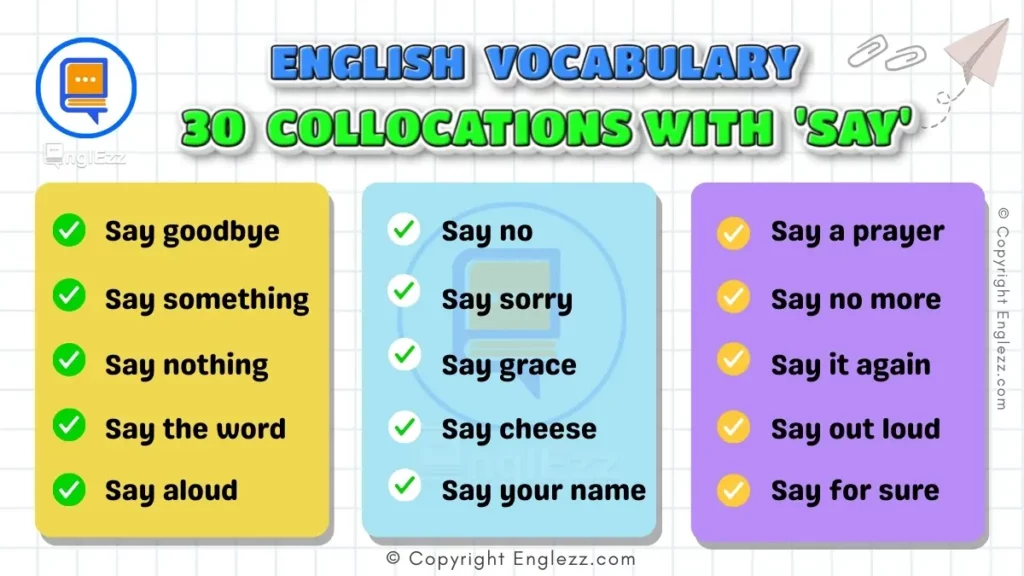
Conclusion
Understanding and using collocations with say can significantly enhance your English fluency and naturalness. These common pairings not only help you communicate more effectively but also enrich your vocabulary and expression. By practicing these collocations, you can ensure your language skills are more dynamic and nuanced.
Remember, language learning is a continuous journey, and every new word or phrase you master brings you closer to fluency. Keep practicing, keep learning, and soon you’ll be using these collocations with ease and confidence. Happy learning!

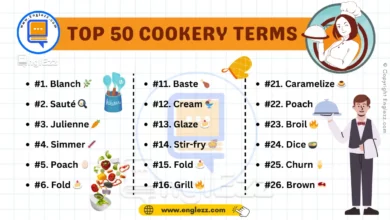
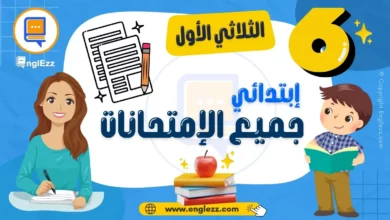

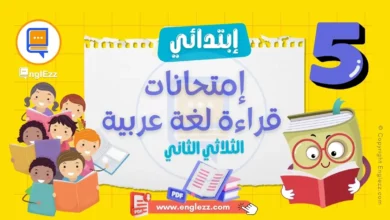
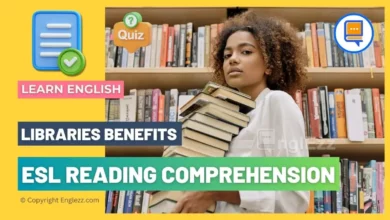

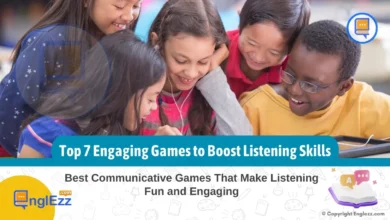
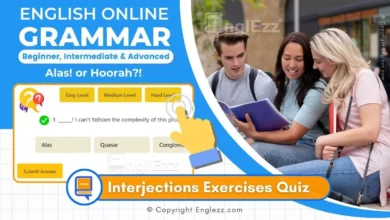
🌟 Discover the nuances of English with our latest blog post on collocations with “say” .
Elevate your language skills effortlessly! Don’t miss out—like and follow EnglEzz for more insights.
.
https://www.englezz.com/30-key-collocations-with-say
.
#englezz #EnglishLearning #LanguageSkills #FluentEnglish #LearnEnglish #EnglishVocabulary #SayItRight